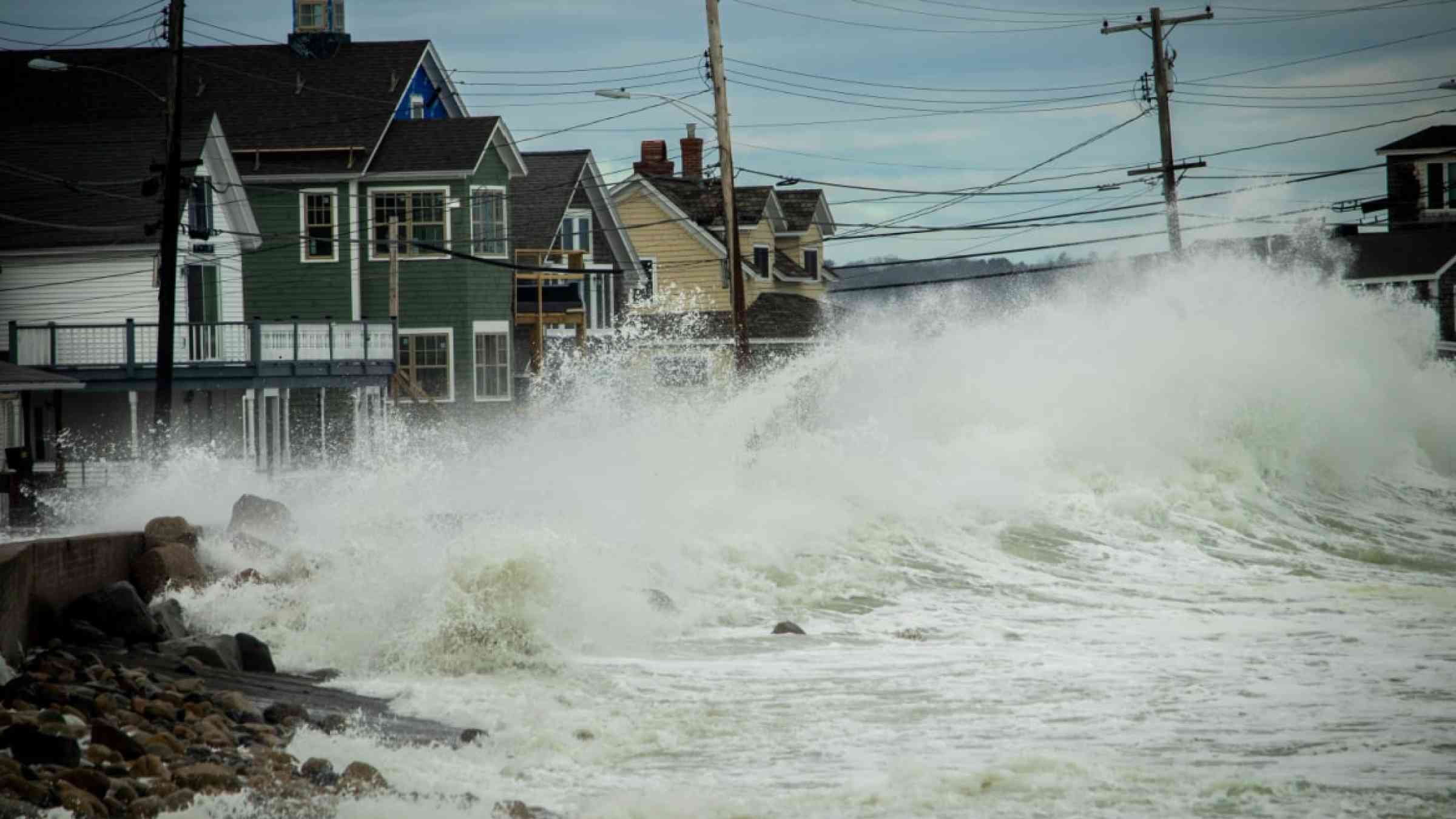Developing nations face 'devastating cost' of future coastal flooding, new study says

New global modelling predicts the devastating socioeconomic impacts of future extreme coastal flooding for developing nations caused by climate change, with Asia, West Africa and Egypt facing severe costs in the coming decades.
Published in Frontiers in Marine Science, the study sought to determine the expected annual costs and number of people impacted by episodic coastal flooding across the globe as sea levels rise, rating the impact of flooding for every country across specified scenarios. The study found flooding would disproportionately affect developing nations, given their reduced capacity to pay for improved coastal defences and their geographic vulnerability.
Led by University of Melbourne's Dr Ebru Kirezci and Professor Ian Young, the study found many developing nations would experience expected annual damage costing over five per cent of their national Gross Domestic Product (GDP) if no coastal defence adaptation measures are taken to mitigate extreme coastal flooding impact.
By contrast, almost all developed nations would experience expected annual damage of less than three per cent of national GDP because of their capacity to undertake coastal defence adaptation measures.
Coastal defense adaptation measures include raising or building sea walls or dykes as sea levels rise, and natural interventions such as improving drainage and sand dunes or mangrove plantations.
“This research shows the human and financial cost of climate change and how unequally its effects will be felt,” Professor Young said.
“Developing nations will be devastated, both in terms of people impacted and their economies. If the money to mitigate this impact in developing countries is not found, communities will be forced into coastal retreat and there will be significant social disruption, including an increase in climate refugees across borders.”
The researchers created a database to model and analyse projected extreme coastal flooding in over 9000 locations for the years 2050 and 2100. Using 2015 data as a baseline, two ‘coastal defence’ scenarios were modelled – one with no additional coastal defense adaptation measures, and the other with additional coastal defense adaptation measures.
The modelling demonstrated that these measures will play a crucial role in reducing the impact of extreme coastal flooding for nations. The modelling predicted the most severe impacts by the year 2100 for Asia, West Africa and Egypt, irrespective of the adaptation scenario. The nations and regions likely to be most affected included Suriname, Vietnam, Macao (Special Administrative Region of China), Myanmar, Bangladesh, Kuwait, Mauritania, Guyana, Guinea-Bissau, Egypt and Malaysia.
Dr Kirezci said episodic coastal flooding can be caused by storm surge, high tides, breaking waves and climate change-induced sea level rise.
“Our model considers tides, storm surges, breaking waves and mean sea level rising. It also accounts for different populations, GDP and greenhouse gas scenarios by 2100,” she said.
Without adaptation measures, the modelling predicted the number of people affected by extreme coastal flooding could increase from 34 million people per year in 2015 to 246 million people by 2100. The expected annual global cost of extreme coastal flooding damage could increase from 0.3 per cent of global GDP in 2015 to 2.9 per cent by 2100.
However, if coastal defense measures match the projected rise in sea levels, by 2100, the number of people affected would be around 119 million people per year, with the expected annual global cost reduced by a factor of almost three, to 1.1 per cent of GDP. The researchers said that finding the funds to pay for these measures will be an enormous challenge.
“There is no doubt this is a wicked problem, which initiatives such as the recent United Nations Climate Change conference COP 27, held in Egypt, are grappling with,” Professor Young said.